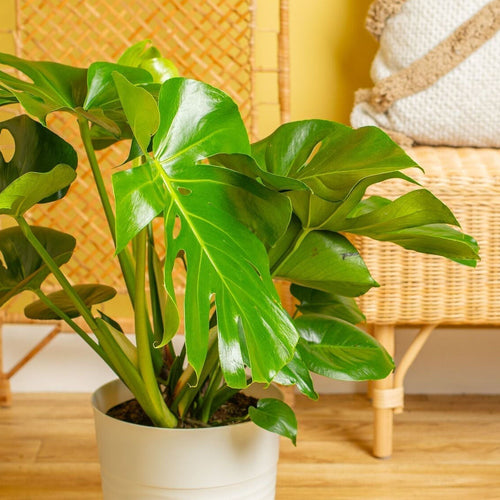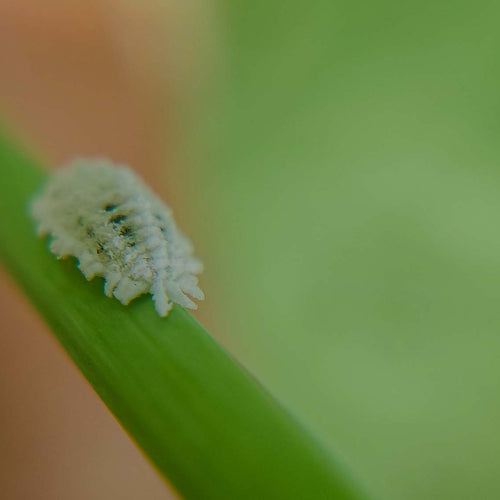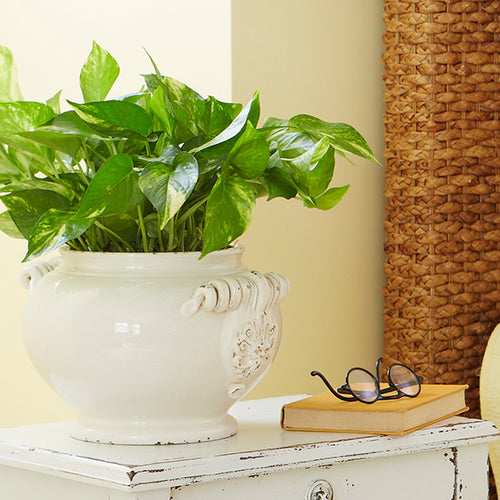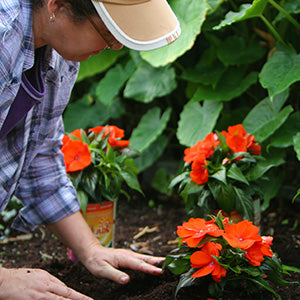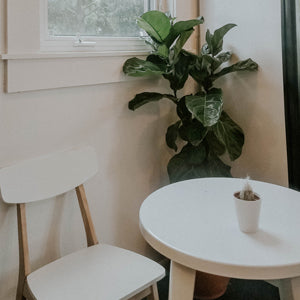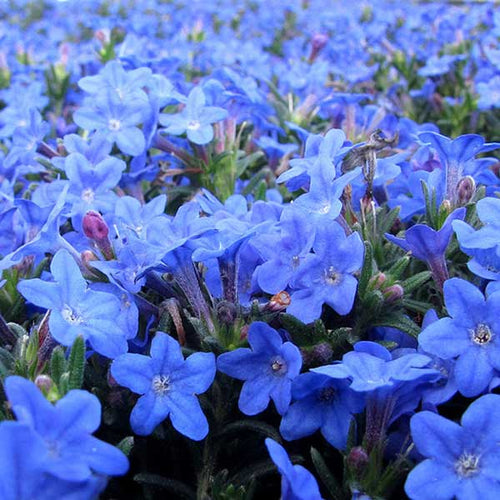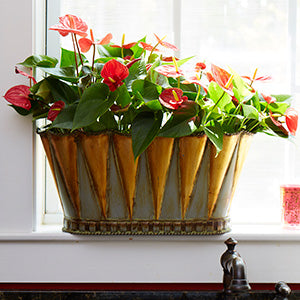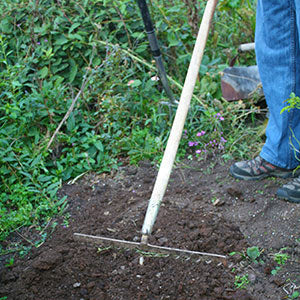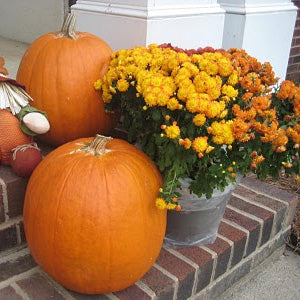By Karen Weir-Jimerson
 Welcome to Gardening in Tennessee!
Welcome to Gardening in Tennessee!
You live in a great climate for gardening! You have lots of and a good bit of rain. Your temperate climate and long growing season you can grow lots of beautiful flowers (such as the Tennessee state flower, the iris, at left) and delicious vegetables and fruits. It’s exciting to be a gardener in Tennessee. In this guide, we’ll discuss just what you need to know about gardening successfully in your state.
Your Weather and Rainfall
The climate in Tennessee features gardening-friendly hot summers and mild to coolish winters. The southern part of the state is warmest and has the longest growing season. Winters are colder in the higher elevations. Most of the state is considered humid subtropical climate except in the mountains. Your average rainfall is 53.67 inches a year. And you average 3 inches of snowfall a year.
Your Land and Soil
Tennessee has diverse topography; the highest point is on the Appalachian Trial at Clingmans Dome which is 6,643 feet tall. The lowest point is 178 feet at the Mississippi state line—on the banks of the Mississippi River. East Tennessee has the rugged Great Smoky Mountains with tall ridges and deep valleys. areas feature level plateaus with gently rolling hills—and fertile soils. And the western part of the state is flat with rich soil. About half of the state is forested. Overall, the soil in Tennessee is acidic.
Your Zone
The USDA Zones for Tennessee range from 5a to 8b. Here are the 10 largest cities in Tennessee with their zones.
- Bartlett 7b
- Chattanooga 7b
- Clarksville 7a
- Franklin 7a
- Jackson 7b
- Johnson City 7a
- Knoxville 7a
- Memphis 7b
- Murfreesboro 7a
- Nashville 7a
To see your USDA Zone by town name, click here:
Your Frost Dates
Here are the largest areas in Tennessee and their last frost dates. The last frost date is the average date in spring that your area could have a killing frost. A frost will kill anything that is not hardy to your USDA zone.
- Bartlett April 11-20
- Chattanooga April 21-30
- Clarksville May 1-10
- Franklin May 1-10
- Jackson April 21-30
- Johnson City May 11-20
- Knoxville April 11-20
- Memphis April 11-20
- Murfreesboro May1-10
- Nashville May 1-10
If you want to see the last frost date map for the state of Tennessee, click here.
Tennessee Seasonal Gardening Calendar
Here’s everything you need to know: what to plant, when to plant it, how to care for it, mulching, fertilizing, watering, and more.
 JANUARY
JANUARY
Remove snow from shrubs.
If you get a heavy snowfall, take a broom or shovel and remove the weight from shrubs so that limbs don’t break under the weight.
Monitor moisture levels in .
If there isn't much rainfall (or snow), water plants and lawns.
Prune trees.
While trees are dormant, you can trim them up to keep their
Start seeds indoors.
Get a jump on spring and start seedlings for cool-weather crops, such as cabbage, broccoli, and cauliflower. Warm-weather veggies, such as tomato, eggplant, and pepper, can be started in later in the month (to be planted in March).
Clean up cold-nipped pansies.
Remove pansy blooms that have been nipped by cold weather. New growth will come.
Plant trees and shrubs.
If the ground is not frozen, plant trees and shrubs in your landscape. Add 2 to 3 inches of mulch around the base, but keep mulch away from the trunk.
 FEBRUARY
FEBRUARY
Hold off pruning spring-flowering shrubs.
Pocket those pruners for spirea, azalea, forsythia, and other spring-blooming shrubs until after they bloom.
Clean up winter-ravaged perennials.
Clip back ornamental grasses and other tall perennials to clean up the garden and make way for new growth.
Watch for early perennials.
Lenten rose, barrenwort, and lungwort are among the earliest perennials to flower. Clean up dead foliage around the base of the plants to give new growth room.
Plant cool-weather annuals.
Brighten your yard with cool-loving flowering annuals such as viola and ornamental kale.
Looking for other things to do in the garden in February?
 MARCH
MARCH
Plant cool-weather veggies.
Early to mid-month, sow lettuce, radish, carrots directly into the garden.
Plant annual flowers.
Create containers or beds using annual flowers that can take cool snaps, such as pansy, dianthus, and snapdragons.
Pot up containers.
Use showy annual flowers to brighten up your porch and patio for spring. Angelonia, dusty miller, and violas are good container options.
Clean up dead in trees and shrubs.
Clip out dead limbs and branches to neaten the appearance of the plants.
Looking for other things to do in the garden in March?
 APRIL
APRIL
Divide perennials.
Multiply your perennials (and invigorate them!) by digging up clumps of asters, , and salvia. Divide into smaller clumps and replant or share with neighbors
Plant summer-blooming bulbs.
Summer flowering bulbs, such as cannas, dahlias, and gloriosa lilies, can be planted now.
Prune flowering shrubs after blooming.
After spring bloomers, such as spirea, azalea, and forsythia, have finished their flower show, give them a pruning shape up.
Prune climbing roses.
After your climbers have bloomed, you can trim them back or reshape them.
Fertilize roses.
To keep roses blooming all summer, begin fertilizing them now and continue every month until September.
Leave daffodil foliage.
After narcissus flowers fade, you can remove their flowers, but leave their leaves until they are completely brown and dried. The leaves help build the blooms for next year’s flowers.
Looking for other things to do in the garden in April?
 MAY
MAY
Add warm-weather annuals to beds and borders.
As the weather heats up, replace cool-weather flowers, such as snapdragons, with heat lovers, such as coleus, marigolds, and petunias.
Plant warm-weather vegetables.
Plant tomatoes, peppers, squash, and corn for late spring harvests.
Tuck in tropical bulbs.
Caladiums and calla lilies can go into the garden this month. Add these beauties the entryway of your home to welcome guests.
Keep an eye on the weather for cold snaps.
Cover tender annuals if temps drop below freezing.
Give houseplants a vacation.
Move indoor plants outdoors for a vacation. Snake plant and majesty palms welcome fresh air and rain. Place plants in a shaded spot so they don’t get burned. Learn more about summering houseplants outdoors.
Grow tropical vines.
Mandevilla vine is an easy-care beauty that lends tropical allure patio and porch containers. Learn more about growing mandevilla.
Watch for garden pests.
Mites and thrips like warm weather. And tomato horn worms may be looking for a meal. Oleander caterpillars may appear (on oleanders). Inspect plants for interlopers and treat with remedy for that particular pest.
Add easy-care lantana to your landscape.
As summer weather heats up, lantana launches into bloom. loves summer heat and sun. It flowers from late spring through frost.
Plant an herb garden.
Basil, cilantro, and dill seeds can be sown or seedlings planted.
Supplement moisture.
Keep beds and containers well-watered as the temperatures rise. Check irrigation heads to make sure shrubs and other plantings are getting water.
Add shade-loving plants.
Impatiens, coleus, and begonia add bright color to shaded spots in your yard.
Mulch!
The best way to help conserve moisture in your landscape is to mulch around plants. Use organic mulches such as pine bark, pine needles, or grass clippings.
Looking for other things to do in the garden in May?

JUNE
Plant annuals that can sail into summer.
As the temperatures rise, so will colorful annuals. Choose heat-tolerant beauties, such as salvia, angelonia, and zinnia.
Add tropical flair to containers.
Easy-care majesty palms excel outdoors in summer’s hot temperatures and look stunning on patios and porches.
Plant perennials for the long haul.
Sun-loving perennials, such as coneflowers, daylilies, and ornamental grasses add long-term color to your yard.
Infuse color in your landscape.
Get ready for summer color by planting long-blooming bright annuals, such as flame-color celosia and hot-pink portulaca.
Plant for fall color.
Plan ahead for beautiful autumnal hues. offer a wide range of colors and flower forms.
Looking for other things to do in the garden in June?
 JULY
JULY
Check irrigation.
The hot July temps in Tennessee makes it necessary to keep up moisture levels in containers and borders.
Plant drought-tolerant flowers.
Reduce watering chores with perennials that can take the heat.
Continue to harvest vegetables.
Pick and use your vegetables this month. Collecting ripe tomatoes and squash encourages more growth.
Rotate crop space.
Don’t use the same spot for the same crop. Planting in a new place helps avoid soil-borne diseases for a specific crop that can build up in the same plot.
Plant summer color.
Infuse your garden with easy-care tropical flowers, such as allamanda, mandevilla, and hibiscus.
Prune hydrangeas.
Shape up hydrangeas by clipping after they bloom. Flower buds form in late summer/early fall, so if you prune after that, you won’t have flowers next year.
Looking for other things to do in the garden in July?
 AUGUST
AUGUST
Continue to water.
One of the hottest months in Tennessee is August. Water plants in the early morning to avoid loss of moisture due to evaporation.
Add plants that love heat.
Heat-tolerant annuals, such as lantana and pentas, excel in containers and window boxes. Here are more heat-tolerant flowering options.
Enjoy a perennial herb garden.
Herbs such as rosemary, ginger, and bay laurel, will grow for years.
Get ready for cool crops again.
Add Brussel sprouts, cabbage, and other cool-loving vegetables for later harvests.
Do a little garden housekeeping.
Deadhead flowers (remove faded blooms) and trim back leggy growth to make your August garden neater and trimmer.
Pinch Perennials.
A little pinch now will lead to bigger bushier mum plants.
Looking for other things to do in the garden in August?
SEPTEMBER
Collect flower seeds.
As flowers fade, harvest dried seed heads to plant for next spring.
Infuse garden color.
Late summer heat can make your garden feel a bit faded. So add showy annuals, such as begonias, to beds and borders for fresh color.
Add plants to feed hummingbirds.
Hummingbirds are migrating this month and in search of nectar-rich blooms such as trumpet vine, salvia, and bee balm.
Plant bright perennials for shaded spots.
Shade-loving perennials, such as hostas, can add cool lushness to beds and borders. See some more easy-care choices.
Win the war on weeds.
Don’t let weeds over take your garden. Pull weeds before they form seed heads.
Looking for other things to do in the garden in September?

OCTOBER
Pot up cool-loving annuals.
Plant pansies, kale, violas, snapdragons, and calendulas.
Add nectar-rich plants for butterflies.
Plumbago, lantana, and salvia are favorite pollinator plants. Learn how to plant a butterfly garden.
Plant ahead for spring...and beyond.
Planting perennials in your fall garden will make for a more beautiful spring. See how to add these long-lived plants to your garden now.
Mulch more.
Add a layer of mulch—2 to 3 inches—around perennials, and trees to help maintain soil moisture levels. Mulch also makes beds look better, so that's a nice return on your time.
fall containers.
Tuck fall combo favorites, such as flowering kale and into containers to add color to porches and patios.
Bring your houseplants indoors.
Before cold weather sets in, bring summering houseplants back inside your house. Check the undersides of their leaves for hitchhiking insects.
Looking for other things to do in the garden in October? 
NOVEMBER
Think spring!
Now’s the time to plant spring-blooming bulbs such as narcissus.
Tuck in cool-weather annuals.
Brighten up your entryway with a swath of pansies. These cool-loving beauties will last well into the colder months.
Plant and flowering kale in containers.
Add pretty pots of colorful mums and flowering kale. Accent the containers with homegrown gourds and pumpkins.
Plant bulbs for the holidays.
If you love amaryllis blooms for the holidays, pot up containers of these beauties now.
. Cooler temps mean your garden needs less water. Adjust your irrigation schedule.
Spruce up your landscape.
November’s cooler temperatures are ideal for planting camellias and azaleas.
Looking for other things to do in the garden in November?
 DECEMBER
DECEMBER
Clean up the garden.
Remove spent vegetable plants, clip off dead perennials, and change out annuals to prepare for a colorful New Year.
Repot houseplants.
If houseplants are rootbound, repot them. They will thank you for the effort with lush new growth.
Add holiday greenery.
Brighten every room this month with colorful indoor plants. Ivy, rosemary trees, Norfolk Island pines, Christmas cactus, poinsettia, amaryllis, and orchids make festive holiday décor.
Add lime to your garden beds.
If your soil is acidic, now is a good time to add lime to your beds and borders.
Looking for other things to do in the garden in December?
Looking for Costa Farms Plants?
Check our favorite local garden center or one of our other retailer partners to order online.






